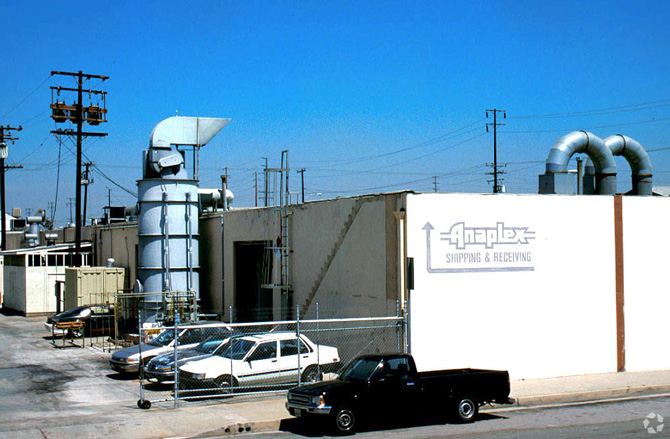
The local metalworking industry is fighting back after a nearly yearlong crackdown by regulators over emissions of toxic chemical hexavalent chromium.
Metal Finishing Association of Southern California, which comprises 100 companies in the region, issued a statement this month challenging the South Coast Air Quality Management District’s science on tracking hexavalent chromium emissions and saying the industry is being unfairly singled out for a widespread issue.
The air district has temporarily shut down two Paramount metal-plating companies in the past year, Anaplex Corp. and Aerocraft Heat Treating Co. Inc., and said it is close to obtaining a shutdown order for a third Paramount facility, Lubeco Inc.
Metalworking industry executives say the air district is singling them out for hexavalent chromium emissions when some of those emissions may be coming from other industries.
“The AQMD continues to attack and fixate on our industry even though it admitted several times in a recent town hall meeting that its air-monitoring system is riddled with problems, inconclusive data and plagued with uncertainty,” Wesley Turnbow, president of the metal finishing association, said in the statement.
Turnbow, who co-owns EME Inc., a Compton metal finishing company with 100 employees, also complained that the air district is inspecting metalworking plants more frequently and taking more drastic enforcement actions against these facilities – including the aforementioned shutdowns – than with other industries.
“The AQMD has to shed this political and emotional pressure and stop the harassment by itself and by other agencies,” he said. “They must slow this down. Then we can talk about the science.”
Turnbow accused the district of relying on extrapolations from a 40-year-old study on emissions of hexavalent chromium, when the tracking technology was still in its infancy. He said the elevated emission levels for the chemical that the district has found could be coming from any number of industrial facilities in the region, such as concrete mixing plants or even “someone pouring concrete for a fence post a quarter-mile away from a metal-finishing plant.”
Wayne Nastri, executive officer of the air district, responded in a written statement that the agency is not relying on that four-decade-old study but is instead using clusters of portable air monitors to locate facilities responsible for elevated hexavalent chromium emissions.
“SCAQMD’s extensive monitoring data, along with inspections and on-site source tests, have conclusively shown that three facilities in and around Paramount were sources of elevated levels of hexavalent chromium,” Nastri said.
He added that even elevated levels discovered on weekends when the plants were closed could be tracked back to those facilities, saying the chemical can accumulate on surfaces and then become airborne again hours or days later when there is sufficient wind.
Nastri also said that the district is laying the groundwork to craft a new rule to set a lower threshold for hexavalent chromium emissions.
The dispute comes just after Gov. Jerry Brown signed a law allowing the South Coast and other air districts to shut down facilities temporarily before cases can be considered by air district hearing boards. Turnbow said his association withdrew its opposition to the bill after accelerated timetables for hearings were inserted.
Water & Power
A bill that would place another regulatory hurdle before Cadiz Inc. – a downtown-based company trying to move forward on a plan to pump and transport water from an underground reservoir under land it owns in the Mojave Desert – has picked up the support of the Los Angeles Department of Water & Power.
Assemblywoman Laura Friedman, D-Glendale, last month introduced an amended version of AB 1000 that would prohibit groundwater pumping in desert areas near protected lands or sensitive habitats. Friedman said the bill is designed to at least slow down the Cadiz water project.
The bill is opposed by several water agencies that have signed up with Cadiz to take delivery of the water should the project go forward. But the LADWP was slated to go on record last week supporting the bill and urging the Los Angeles City Council to do likewise.
A proposed letter to the city from LADWP General Manager David Wright states that as an investor in the regional wholesaler Metropolitan Water District, the department could be liable for damage to the desert environment from the pumping of the water and its transportation to the Colorado River Aqueduct.
Staff reporter Howard Fine can be reached at [email protected] or (323) 549-5225, ext. 227.
